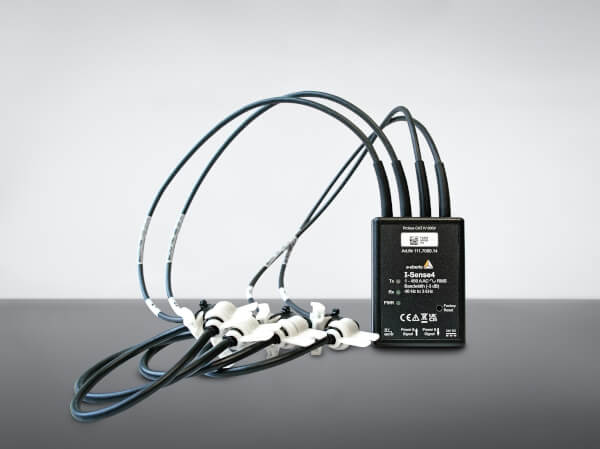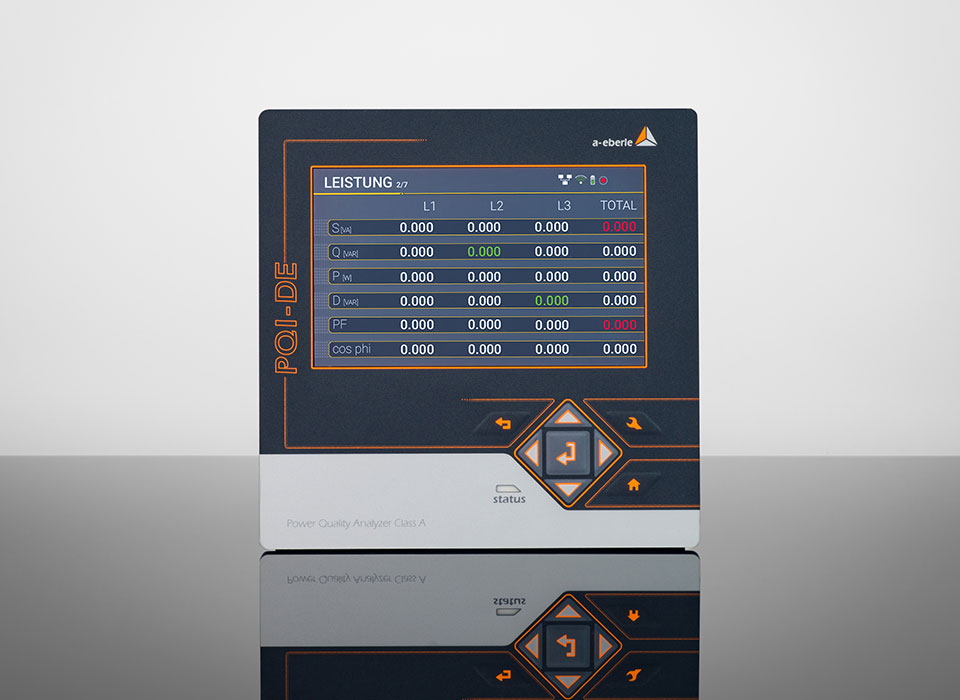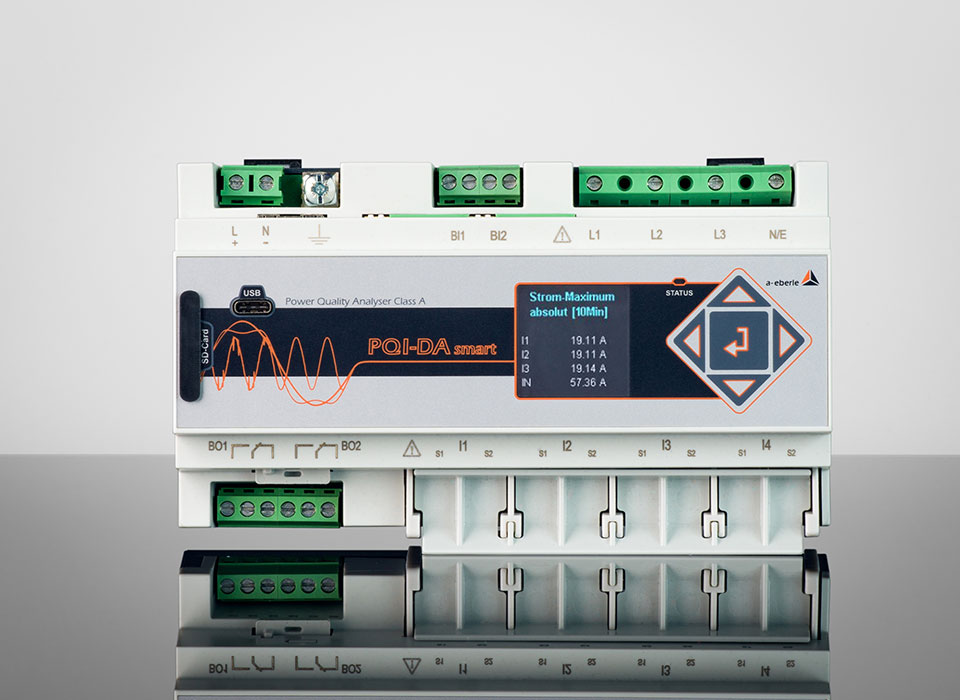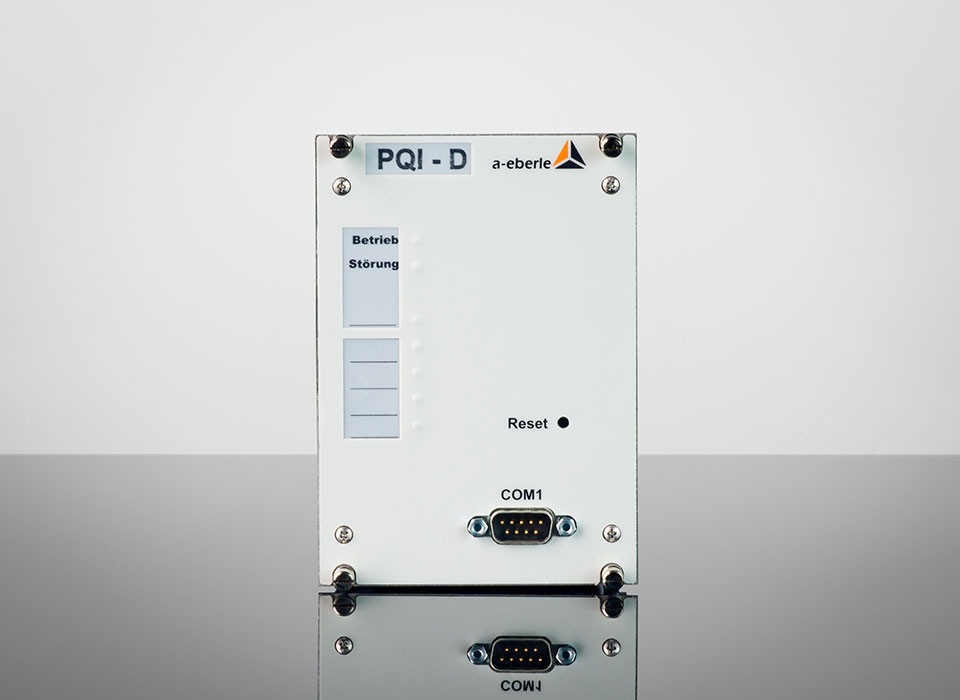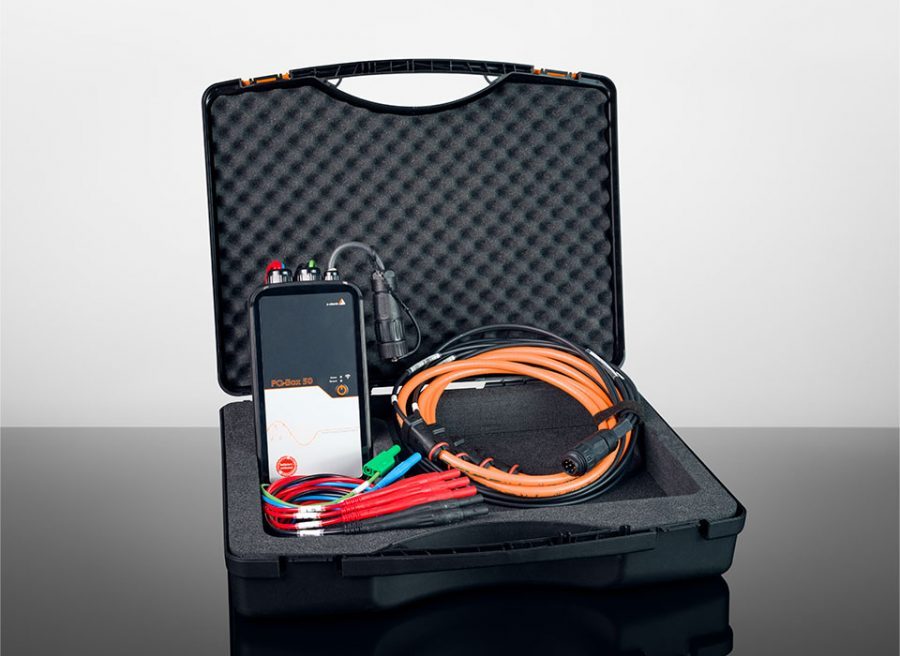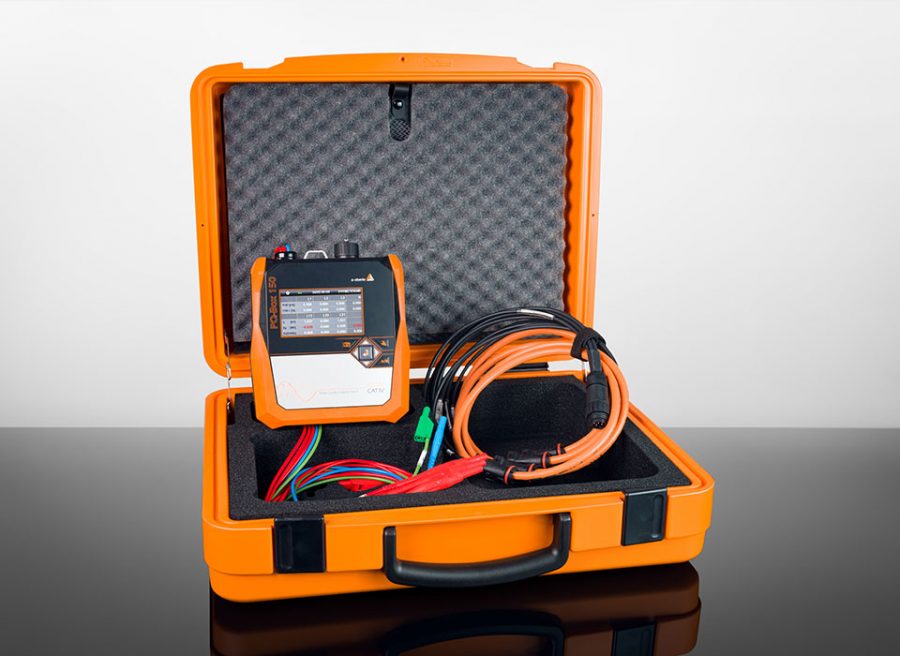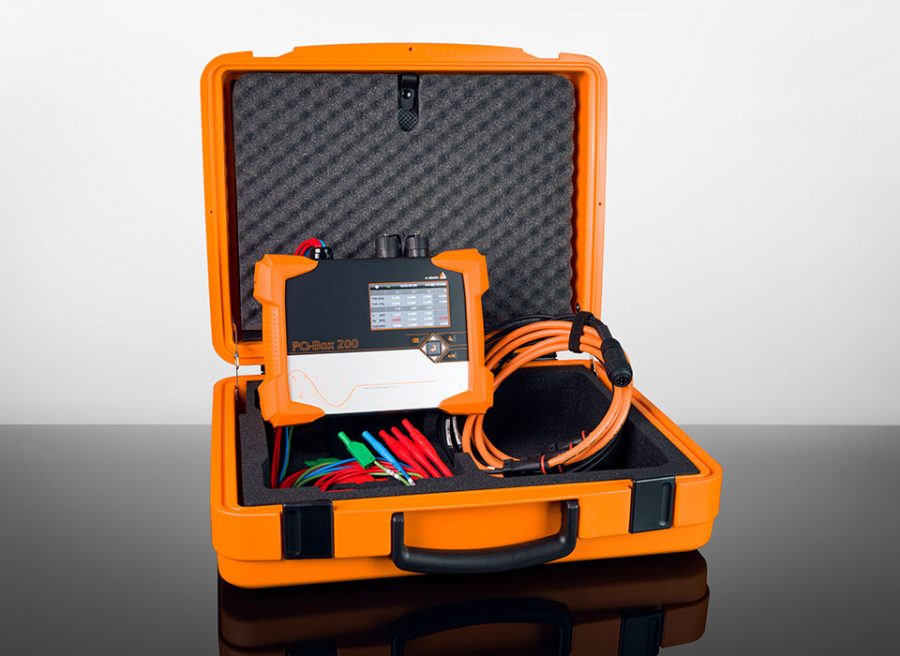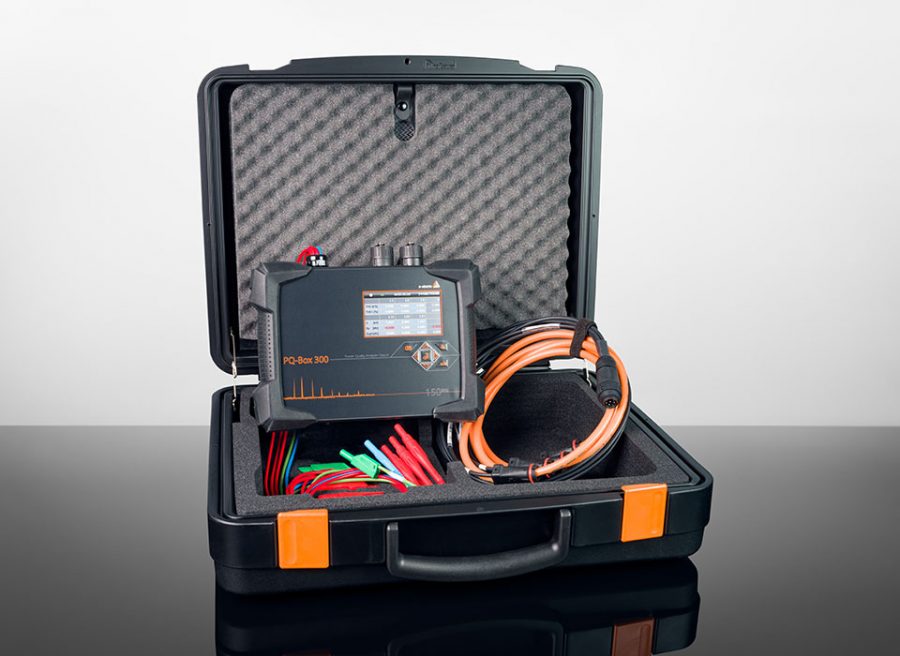Cos ϕ vs. power factor λ
This technical report discusses the distinction between power factor and cosine phi.
Cosine Phi, formerly widely known as the ratio of active power to apparent power, however, has a different meaning for many consumers today. There is a striking difference in the definition of how power factor or cosine phi is calculated.
The formula for the power factor (Lambda) shows that the latter represents the voltage multiplied by the fundamental current and the cosine of the angle Phi (phase shift between fundamental voltage and fundamental current).
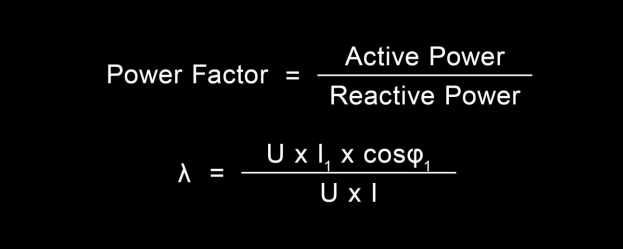
In relation to the apparent power (U x I), the power factor is defined as the ratio of active power to apparent power.

Only if both the current and the voltage in a network are sinusoidal (free of harmonics), the power factor and the cosine Phi are identical. However, this is rarely true nowadays, because in practice at least the current has harmonics and often deviates strongly from a pure sine wave.
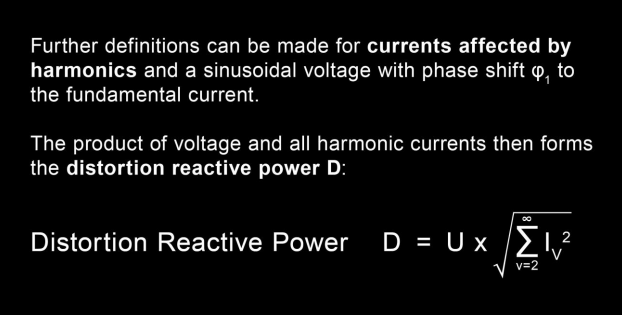
In this case, in addition to the fundamental reactive power, harmonic reactive power or distortion reactive power is also obtained in the network.
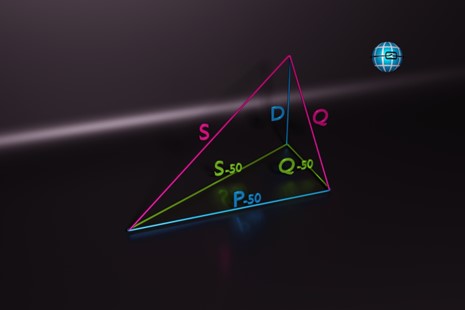
The power triangle, consisting of active power, reactive power and apparent power, has now expanded into a three-dimensional construct. This extension includes consideration of the fundamental reactive power (Q-50), which can be either capacitive or inductive. The angle between active and reactive power is thereby 90 degrees. The third dimension of the power triangle includes the distortion reactive power (D) of harmonics, which is at right angles to the fundamental reactive power. To obtain the total reactive power of a circuit, these must be summed squared. To attain the apparent power, the active power (Q) and the reactive power, which are at right angles to each other, must be summed squared.
The apparent power is defined by the formula voltage x current.
A practical example of this can also be found in the video shown here:
A PQ box is used to measure a voltage with a frequency of 50 Hertz. The current has a frequency of 150 Hertz. By multiplying the samples, a power is now calculated from these two frequencies. At certain moments, the power is positive and flows from the grid to the consumer. There is also a red power curve that is negative and in the negative range. By definition, this is where power is pushed from the consumer to the grid (negative sign of the power).
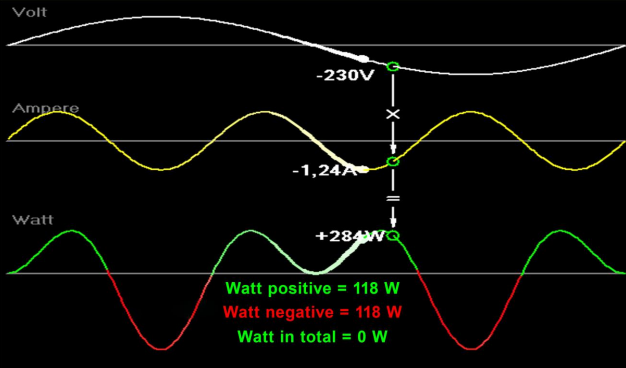
In power measurement technology, it is necessary to always integrate the power over the area. In the 50 hertz network, the smallest measurement interval is one sine half-wave, thus 10 milliseconds. To calculate the power, the area under the power curve is integrated over this period. In this example, integrating the green power curves above the zero line gives a value of 118 watts, while the larger red curve below the zero line has a value of minus 118 watts. The integral of the total power over 10 milliseconds gives a value of zero, indicating oscillating power, which is defined as reactive power. Although this reactive power loads our line and the transformer, it does not have to be generated as active power. In practice, all current harmonics are multiplied by the voltage fundamental oscillation to calculate the distortion reactive power. Since the basic voltage oscillation dominates and the other voltage harmonics usually do not play a major role, this can be neglected in the measurement technique.
Reactive power is a type of power that is present in an electrical network that is not used, but only serves to increase the network load and losses in the network.
There are the following types of reactive power:
- Fundamental reactive power
- harmonic reactive power/distortion reactive power
- unbalance reactive power
- modulation reactive power
There are different remedies for each type of reactive power.
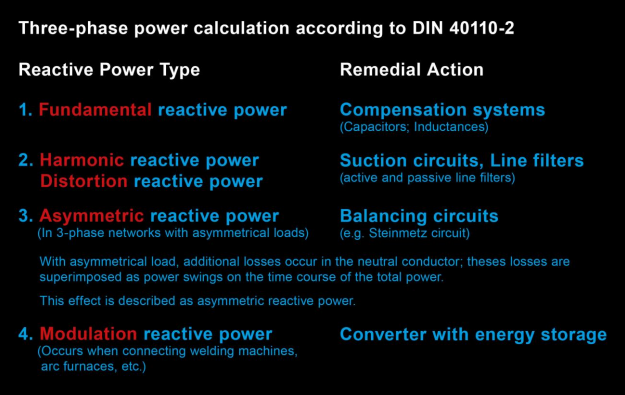
Reactive power refers to the deviation between the apparent power displayed in a network and the actual active power used by the equipment.
Unbalanced reactive power occurs when loads in a three-phase network are loaded unbalanced. This can occur, for example, due to different power on the three phases L1, L2 and L3. Although the apparent power and the active power per phase are equal in this case, a reactive power results in the overall system, which is called unbalanced reactive power. To reduce this reactive power, one can use, for example, an unbalance compensation system that compensates for the unbalanced currents and thus minimizes the reactive power
Modulation reactive power is caused by large fluctuations in the modulation of the current, such as in oscillation pack controllers. Today, there are many different types of reactive power, which modern power analyzers such as the PQ-Box evaluate and record individually.
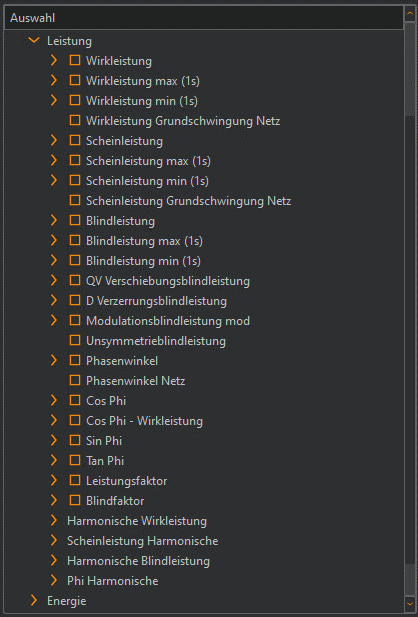
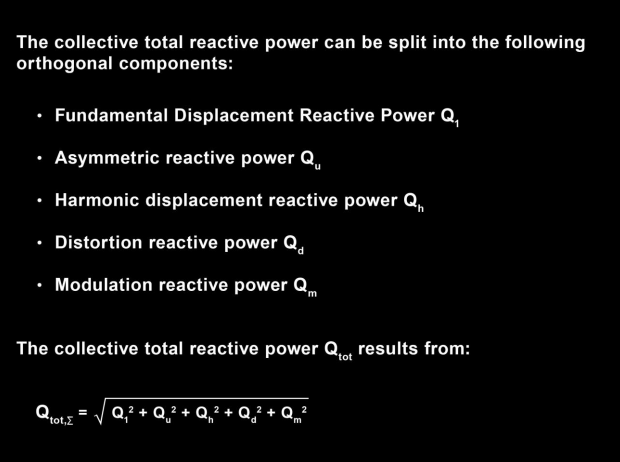
The collective total reactive power is the square sum of all reactive power types.
This collective total reactive power thus explains the deviation between active and apparent power. It should be noted that the collective reactive power never has a sign, since all reactive power types are summed squared and consequently the sign is always positive. Only the fundamental reactive power can have a sign. A minus sign if this is capacitive and a positive sign if this fundamental reactive power is inductive.
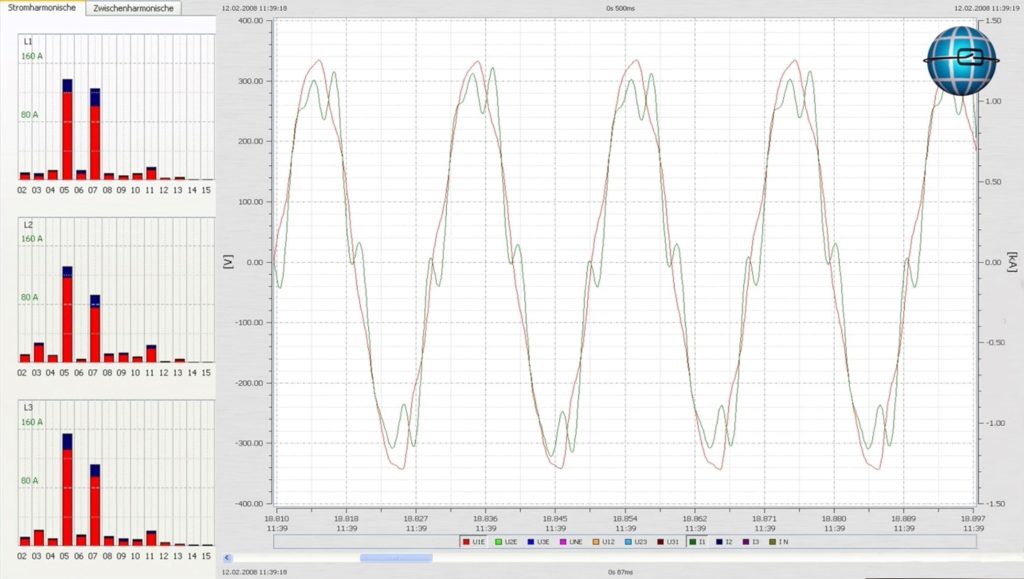
The use of a frequency converter serves as a practical example. In this case, a B6 bridge rectifier circuit with 4 diodes is installed before the drive. The three-phase voltages or currents are hereby rectified and sent to the input of the inverter. In Fig. No. 7, it is easy to see that the current and voltage are in phase, expressing a cosine phi of close to 1. However, power analyzers will indicate a large reactive power for this load, since the power factor (ratio of P to S) is 0.85. An analysis of the current shows that the fifth and seventh current harmonics are present in this case, up to 160A. These current harmonics result in a distortion reactive power.
Another video shows, on a practical example, the reactive power types on the basis of a phase angle control.
Autor
Jürgen Blum, Product Manager Power Quality Mobile

